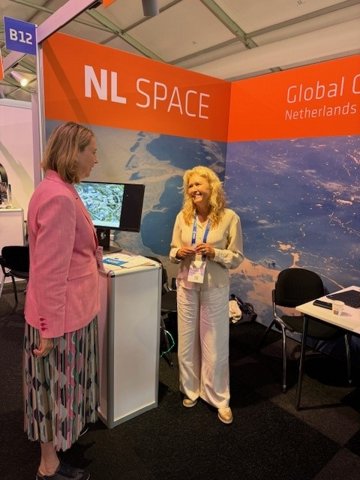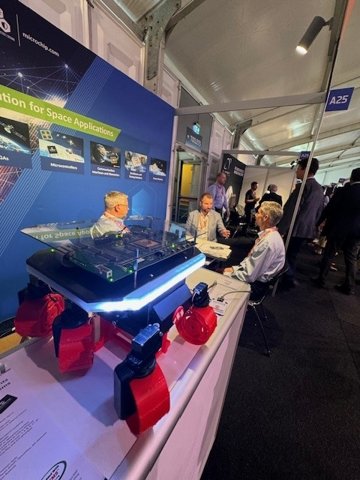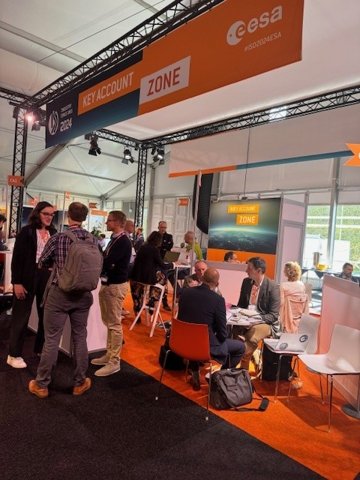ESA industry days: Dutch space sector on speed date for the future
The space industry of the future offers plenty of opportunities for Dutch companies working together. This was evident earlier this week during the ESA Industry Days on the grounds of test center ESTEC in Noordwijk. 
In a maze of exhibition booths, each about five square meters in size, Dutch and European space companies lined up. Builders of sensors, satellites and solar panels.
Frank Meiboom of Airbus Netherlands explains how that company used to make only one offs: solar panels for a single ESA or NASA space mission. Now it is building a production line for two hundred solar panels that should be ready in a year and a half. Courtesy of a new product for a relatively new market: Sparkwing.
'Sparkwing is a commercial product better suited to the needs of our time. It is a catalog of solar panels that are easy to customize and quick to produce. But based on our years of experience with large satellite projects, made possible by ESA and the NSO, among others. We invested a lot in this product, but it turned out to be a golden opportunity. More than half of the turnover we brought in in orders last year came from Sparkwing.'
Talks on the tennis court
In the big white tent, with hundreds of cubicles like Airbus's, you can hear dozens of conversations mixed together about major trends in the space industry, such as commercialization. The key question, of course, is: how can the Netherlands capture a larger share of the emerging commercial space market?
From the hall it is a one-minute walk through a temporary tunnel to the tennis hall of sports complex Escape. The tennis courts have given way to a large stage and 250 seats for an audience. Throughout the day, experts from ESA will talk in talks about the topics and space missions they are working on in the coming years: autonomous access to space, sustainability on Earth and in space, space for security and more.
By updating companies from all over Europe at the same time, ESA hopes to promote national and international cooperation in the space sector. 'Satellite missions are complex and developing new technology requires large investments,' says NSO advisor Bert Meijvogel. 'That's why you have to cooperate with each other. Dutch companies do this, for example, in the areas of solar panels, propulsion, control systems, sensors, instruments and optical communication.'
Speed dating in the sports hall
The sports hall is buzzing with activity. Companies and professionals meet during speed dates: short, powerful conversations in search of new opportunities and collaborations. This is where ideas are exchanged, competitors become potential partners and new connections emerge that will shape the future. This is the beating heart of innovation and cooperation, where the next big steps are taken. 
'Industry days are a time to immerse yourself for a while in the world of ESA. If you do anything with hardware in space, you should be here,' says Jeroen Rotteveel, founder and director of Isispace and chairman of industry association SpaceNed. 'The Netherlands has a whole ecosystem of small and medium-sized space companies. They pull together in global developments, such as laser satellite communications and Earth observation. But also nationally to contribute to defense space capabilities.'
Although Isispace does not usually close deals at industry fairs like this, the company is happy to be updated by ESA on upcoming developments: 'ESA gives us the opportunity to validate technology. For example, our new ejection mechanism for cubesats will fly with the Hera mission, which launches on Oct. 7. The same technology we want to use in future missions to the moon and to Mars.'
Cooperation embedded in DNA
ESA came into being in 1975 when ten countries started cooperating in space. The space organization now has 22 member countries, each with its own space industry. During the industry days you can see how deeply anchored cooperation is in Europe and thus also in the ESA DNA. Speed dating, attending lecture, talking in the exhibition booth, repeat. For two days. No time for a break, at most a smooth cup of coffee - but while talking. Because the new space reality offers plenty of opportunities.
